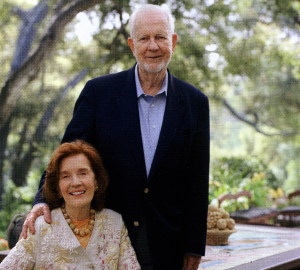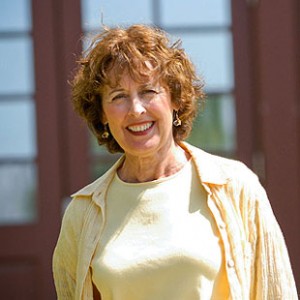SEASONED PHILANTHROPISTS
You won’t find their names plastered on buildings and placards around town, yet, in their quiet, generous way, Jon and Lillian Lovelace give graciously of their time, intellect and millions to a wide range of worthy organizations.
“We’re a little bit camera shy, publicity shy,” Lillian, explains.
Click here to see the story in Santa Barbara Magazine.
“A lot of people seem to do it [donate] to get their names in the paper. We’d like to be helpful without getting our names in the paper,” says Jon.
The arts rank high among their interests. Lillian, whose eclectic collection of modern art and Pacific Island artifacts decorate their Montecito home, was on the board of the Santa Barbara Museum of Art for 20 years and is now a sustaining trustee. In addition to fine art, the Lovelace’s share a love of music, dance and theatre and spend about a third of their time traveling around the world combining philanthropic and cultural endeavors.
Locally they are strong supporters of the Santa Barbara Dance Theatre, Camerata Pacifica, Music Academy of the West, UCSB Arts and Lectures, and the State Street Ballet, as well as having served on the boards of the Museum of Contemporary Art (MOCA) and the Getty Museum in Los Angeles, where Jon served as chairman of the board during the construction of the Getty Center.
“If we can be helpful, when something strikes Lillian’s fancy or something that she’s connected with, as with me, we get involved with that,” says Jon, who is also very supportive of wilderness preservation groups like the Nature Conservancy, the Sierra Club, and the Yosemite Fund.
Jon, Lillian and their four grown children (Jim, Jeff, Rob and Carey) were avid hikers and campers when the kids were young. “The outdoors has always been an interest,” says Jon, who ranked number 354 on Forbes list of the 400 richest Americans and recently retired from the Los Angeles-based Capital Group, one the world’s largest mutual fund management companies. Jim and Rob now work for the Capital Group, which was founded by their grandfather, Jonathan Bell Lovelace, in 1931.
The Lovelace children are also involved in giving back to the community, through organizations such as California Institute of the Arts and Idyllwild Arts Foundation–it’s a tradition of generosity that goes back generations. “My family was very much involved in social action and caring about other people and giving back to the community. They instilled that that was important. Jon’s father was involved with philanthropy and hospitals,” says Lillian.
The Lovelace’s have carried on the legacy of supporting healthcare by donating generously to medical institutes around the world, including Sansum Clinic and Phoenix of Santa Barbara, which provides care for mentally ill adults.
“I think that mental health is an area that is vastly ignored, it’s kind of a scary thing and not something people like to talk about. They used to not talk about cancer but now anybody can say cancer any time they want to but there’s still some avoidance of talking about mental health problems and I think that it needs all the support it can get,” explains Lillian, who majored in psychology at Antioch University, where she is now a sustaining trustee.
While many of the Lovelace’s philanthropic efforts have started with this type of a personal connection, there really is no typical scenario for their involvement. “It depends very much on the situation–there’s no single type of organization or way we try to help,” says Jon.
The Lovelaces–they married 56 years ago and used to celebrate their anniversaries in Santa Barbara until they moved here from Whittier in 1972 after their son Jim developed an allergy to the smog–share a strong interest in travel and the arts, often meeting up with their children to catch a performance or an exhibit somewhere in the world. They like films as well, and were investors in their friend Garrison Kellior’s 2006 movie, A Prairie Home Companion, starring Meryl Streep.
Friends like Kellior are an important part of the Lovelace’s lives.
” We mentioned family but we have so many wonderful friends that we’ve met over the years,” says Lillian.
“Throughout the world, actually,” Jon says.
“We’re recluses that love people,” concludes Lillian. Or perhaps people who love life.



 Santa Barbara’s favorite emcee has helped raised millions of dollars for local causes. But he can’t be outbid when it comes to community service.
Santa Barbara’s favorite emcee has helped raised millions of dollars for local causes. But he can’t be outbid when it comes to community service.

